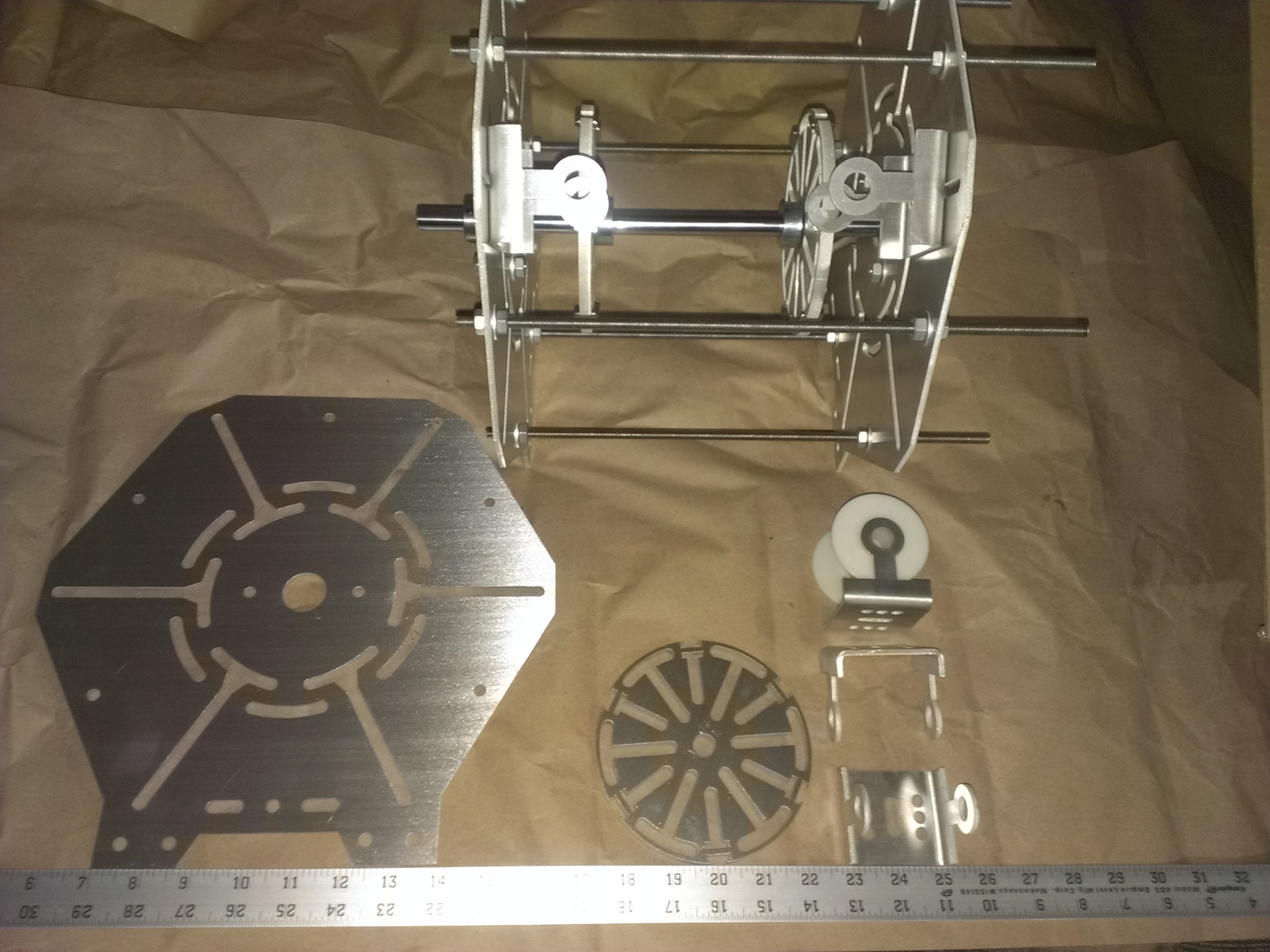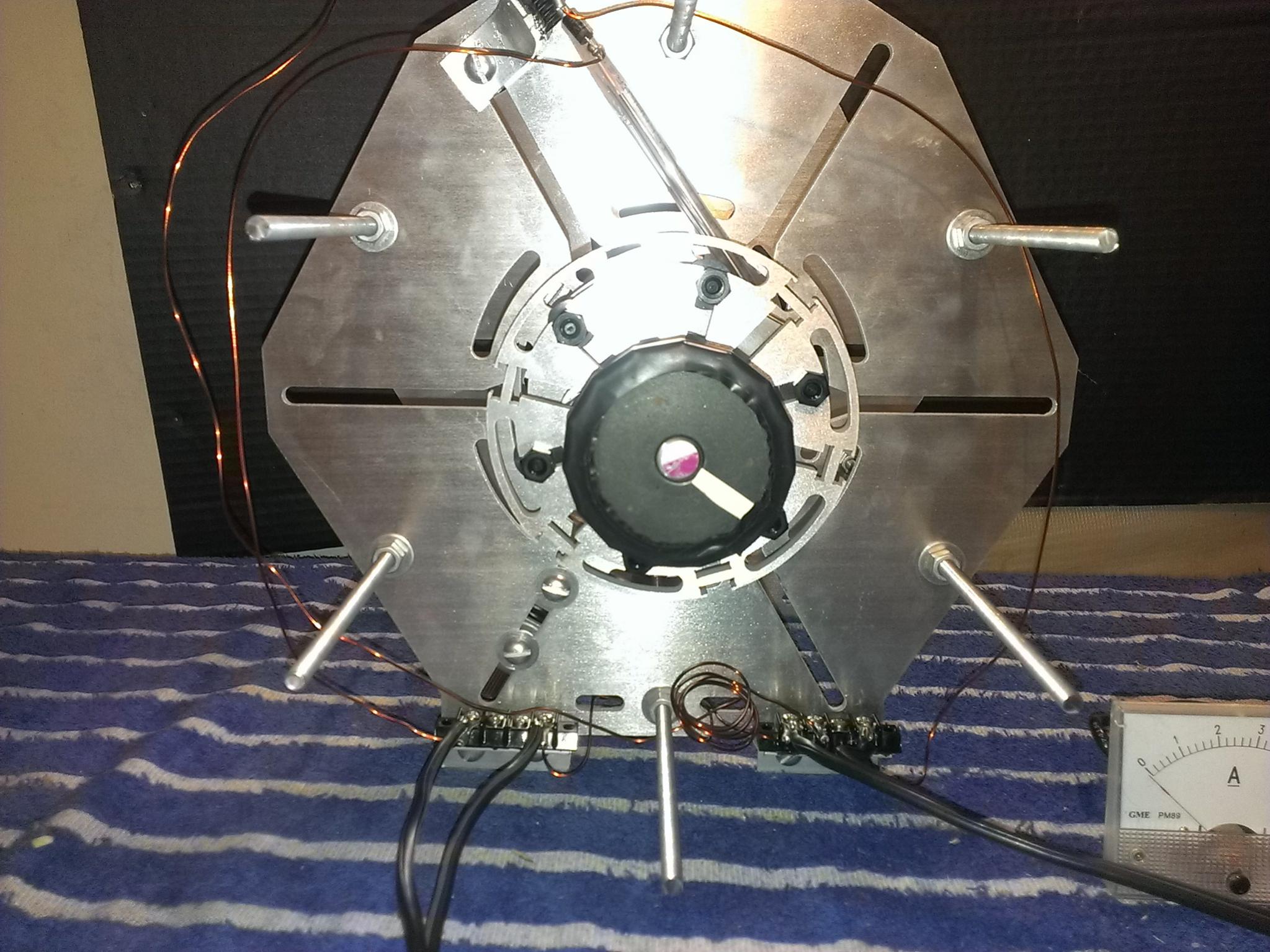Hello everyone,
I have been working on a new project and I thought I would kick off a new thread for it.
This machine has a frame of just under 12 inches with 5 inch wheels. When it is fully populated I have room for 12 coils, 6 in the front and 6 in the back using two wheels. The screws and nuts, threaded rods frame and wheels are all aluminum which did drive up the cost a bit but I expect this thing to last for a very long time.
This machine will not be using transistors for the switching. I have been testing some different methods and I think I have found something that works pretty well. I use welding rods as contacts and some brass pipe which I cut into 1 inch pieces. The brass is mounted on a timing wheel with plastic posts and rubber washers to keep the current isolated from the machine. I know this will wear down but that doesn't bother me since I can just replace the rods as needed. I have only had it running for a day so there is much to learn about it going forward.
Here are some pictures:



Questions and comments are most welcome in this thread so feel free. ----Bob
I have been working on a new project and I thought I would kick off a new thread for it.
This machine has a frame of just under 12 inches with 5 inch wheels. When it is fully populated I have room for 12 coils, 6 in the front and 6 in the back using two wheels. The screws and nuts, threaded rods frame and wheels are all aluminum which did drive up the cost a bit but I expect this thing to last for a very long time.
This machine will not be using transistors for the switching. I have been testing some different methods and I think I have found something that works pretty well. I use welding rods as contacts and some brass pipe which I cut into 1 inch pieces. The brass is mounted on a timing wheel with plastic posts and rubber washers to keep the current isolated from the machine. I know this will wear down but that doesn't bother me since I can just replace the rods as needed. I have only had it running for a day so there is much to learn about it going forward.
Here are some pictures:
Questions and comments are most welcome in this thread so feel free. ----Bob


 That beast could crank 6000 RPM and went through points in about 5000 miles or so. Didn't do much better on tires either.
That beast could crank 6000 RPM and went through points in about 5000 miles or so. Didn't do much better on tires either. 
Comment